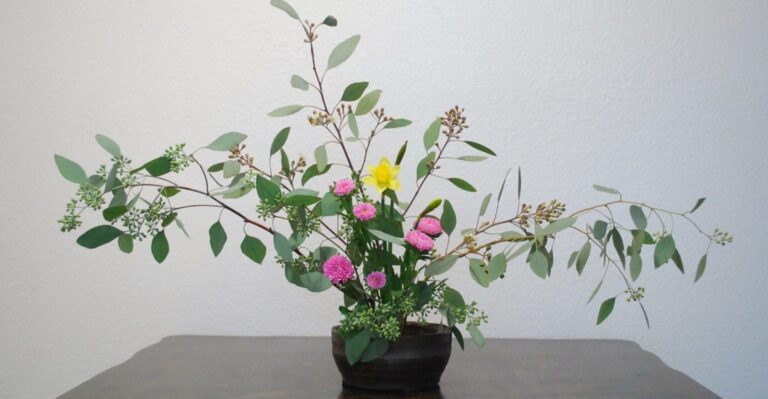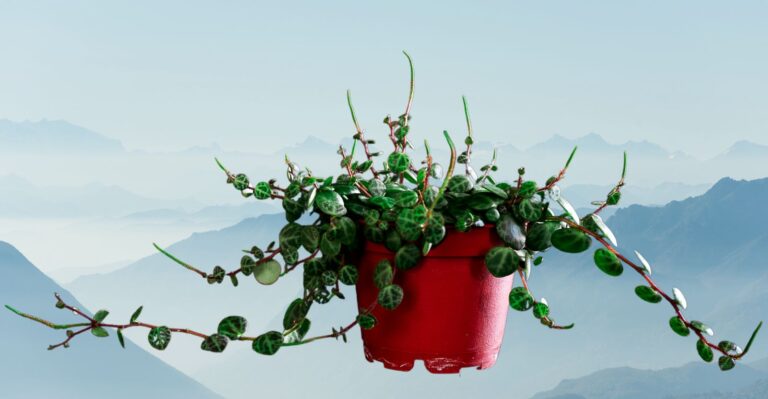Amazon has put together some great Home Gift Deals – save money and get your shopping done at the comfort of your home! Click here to see deals on Amazon
Philodendrons are a popular house plant, and they come in all shapes, sizes, and colors. Dark leaf philodendrons are the most exotic, prevalent in the indoor houseplant collection.
Their thick, waxy triangular leaf comes in different color shades and patterns, such as dark purple, deep orange, red, and black. These are gaining popularity after people started posting images of this dark beauty on social media. This is easy to grow and care for, tolerant of low light and temperatures, and only needs moderate humidity.
Philodendron dark lord is a great houseplant for beginners because it’s relatively low maintenance. Here we will provide all the information you need on how to grow and what care is necessary to reach their full potential.
Let’s begin.
Some Products at Amazon to Grow Philodendron dark lord
- Neem Bliss 100% Pure Cold Pressed Seed Oil
- Southern Ag Liquid Copper Fungicide
- All-purpose House Plant Fertilizer
What is the Philodendron dark lord plant?
Philodendron “dark lord” is a popular indoor and outdoor plant among plant enthusiasts. It grows shiny foliage and tendrils long rather than in width. It has dark long arrow-shaped leaves that appear all black in a matured plant. These leaves can reach 20 to 22 inches long in a fully developed plant.
This is a hybrid of the Red Philodendron Erubescens known for its ample foliage and long glossy purple cast on the leaf’s edges. Dark lord philodendron changes color during its growth. In the beginning, their stem is more orange in color, then switches to red and finally becomes dark green. The leaves also change color and turn dark black with a maroon shade at the bottom.
Origin: It’s native to South America, primarily Colombia and Panama, but some of its smaller varieties are often found in Africa and South-East Asia. It belongs to the Araceae genus of the plant family made of over 3,750 different plant species.

Appearance: The juvenile leaves start with bright pink color and turn to blood red before turning dark green with long arrow-shaped leaves and maroon shade undersides. The shiny dark color at the top of the leaves sometimes looks all black, giving the Dark Lord’s name.
Other names: The scientific name is Philodendron, “Dark Lord.” Many people know it as Dark Knight Philodendron, Dark Lord Philodendron, Pink Dark Lord Philodendron, and Dark Lord Plant.
Is philodendron dark lord rare?
Yes, philodendron dark lord is rare and not readily available everywhere. Your best bet to find these are through online garden retailers such as Etsy and Amazon, or you can check out the local Facebook marketplace.
The primary challenge is maintaining the deep dark tone of leaves which changes to light green if the suitable growing condition isn’t supported, thus reducing the supply. Also, buyers have had an enormous demand recently, making finding the plant in the stock challenging.

Comparison of the dark lord with other varieties
Several different philodendron varieties look very similar, making it difficult for beginners to know the difference. Here is some difference between Philodendron dark lord plant with other species.
Philodendron dark lord vs. the red emerald
The main difference between the dark lord and red emerald is the color of the stem. The Philodendron red emerald has red wine-colored stems, while the dark lord has a dull green stem.
The leaves of the dark lord are a dark green and are arrowhead-shaped with subtly serrated edges. The leaves of red emerald are vibrant green and have a glossy appearance with heart-shaped leaves.
The Philodendron red emerald reached up to 6.5 tall and 5 feet wide and is considered a fast grower, whereas Phiodendron dark lord can grow up to 6 feet tall and 4 feet wide.
Philodendron dark lord vs. cardinal
Philodendron cardinal is a relatively smaller size than the dark lord. They grow up to 3 feet tall, while dark lords can grow up to 6 feet. The cardinals have more shrub-like characteristics, while dark lord has covered plant features due to broader leaves and taller growth.
The black cardinal leaves are more heart-shaped with broad changing colors that transform from orange to green then black when fully matured. The leaves on the dark lord are more arrowhead-shaped and pointed. The leaves are stark dark red and turn into a dark green that looks black.
Philodendron dark lord vs. majesty
Philodendron majesty has dark burgundy foliage, whereas dark lord has dulled green foliage when matured. The majesty is hybrid of Philodendron verrucosum and Philodendron sodiroi, whereas Philodendron dark lord is a hybrid variety of Philodendron erubescens imperial red.
The majesty grows up to 8 feet or taller, whereas the dark lord grows at a maximum of 6 feet. The majesty leaves are like the dark lord arrowhead, but they’re glossier, whereas the dark lord has a duller texture.
How to care for a philodendron dark lord
Any avid plant lover will tell you that the philodendron dark lord is one of the most versatile indoor plants you can have. Here are some steps to properly take care of this majestic plant.
Philodendron dark lord Care Summary
| Factor | Growth Condition |
|---|---|
| Soil | Well drained moist soil |
| Water | Once a week in summer and longer in winter months |
| Sunlight | 6 – 8 hours of indirect light |
| Temperature | 70°F – 85°F (21°C-29°C) |
| Fertilizer | Balanced fertilizer once a month in the spring and summer |
| USDA Zone | 9-11 |
| Common Problem | Yellowing and Browning leaves |
| Where to Buy | Amazon, Etsy |
Soil
The dark lord will thrive when placed in a mix comprising coco coir, perlite, orchid bark, worm castings, pumice, and activated moist soil charcoal that drains quickly and has a lot of organic matter. In potted plants, they like a bit acidic soil to a slight neutral with a pH range of around 5.5 to 7.5.
You can include sulfur or aluminum sulfate if the pH of your soil is too high, or you can include baking soda, calcitic lime, dolomitic lime, or wood ash if the pH is too low. Adding lots of organic materials and other minerals gives the best growing environment for the plant.
You should avoid using sandy soil that doesn’t retain water and dries out much faster than regular soil. But you don’t want the ground to remain overly wet as well as it harms the root. Ensuring having proper drainage in the pot helps prevent overwatering problems.
Like other Philodendron species, the overly moist and compacted soils cause the stunted growth of these plants. Clay soil isn’t suitable for these plants since it will shrink and prevent nutrients and oxygen from reaching roots. Just make sure to provide moist, well-drained soil, and your plant will love it.
Light
If your philodendron isn’t growing as fast as you thought, you may need to give lighting conditions a closer look. They thrive in an environment where they can get 6 to 8 hours of bright indirect sunlight.
I like to keep mine in a spot where it receives one to three hours of moderate-intensity sunlight in the morning but then moves to a partial shade area.
Keeping it at a few 1–3 hours of direct light won’t do any harm, but you shouldn’t leave it there permanently as it could damage the delicate leaves.
The plant won’t do very well in low-light conditions, so picking an artificial growing light (like this from Amazon) will be another option if you can’t provide sunlight at your place. You can also place it at a south-facing window to receive indirect sunlight.
Water
The amount of water a philodendron need depends on the plant’s size and type. You need to water it once per week during the growth period of spring and summer and less frequently during the winter months. Before watering, make sure the soil is completely dry, as their roots don’t like sitting soaked in water.
Whenever you water, you should water it till it runs out of the drainage holes in the container and water around the soil. Try to keep the soil moist during the growing season but be careful not to overwater it due to the risk of root rot.
Make sure your plant gets the water it needs by checking the soil regularly. You can use a stick and push it a few inches deep in the ground. Water will soak the stick with some dirt if the soil is wet.
If you can quickly move the stick into the soil with little effort, it’s moist, and you don’t need to water it. If you can’t push the stick into the soil and the ground feels hard and brittle, you should water the plant.
Temperature
It shouldn’t be surprising that this tropical plant prefers a warm environment. If you live in a place affected by drastic temperature fluctuations, try to plant this indoors. The ideal temperature range for the dark lord is between 70°F – 85°F (21°C – 29°C).
The warmer the air temperature, the thicker the dark maroon coloration will appear on the plant foliage and leaves. Be careful not to leave it outside if the temperature falls below 55°F (12.5°C) as it causes the plant growth to slow, resulting in wilting or even dying.
You should be planting indoors if the temperature in your location falls below the minimum, but if you live in USDA zones 9–11, you can grow it outdoor without much concern.
Humidity
Just as temperature dictates, attaining suitable humidity levels is critical. If possible, place it close to the bathroom or kitchen where there is high humidity, and you can also buy a humidifier if you desire.
The ideal level of humidity is between 50 and 60 percent. If that seems too humid for your comfort, don’t worry, as you don’t always need to maintain that high humidity level. The plant will let you know when it needs more humidification by the leaves developing a more wrinkled look with small brown spots around.
There are two easy ways you can increase the humidity if needed. First, use a small humidifier to provide some additional boost. You can also group several plants to create a mini-greenhouse where plants share moisture through transpiration.
Fertilizer
Once each month, you should apply the fertilizer during the spring and summer months of the growing season. A balanced liquid fertilizer is the most effective. Look for the fertilizer that has a mix of Nitrogen (N), Phosphorous (P), and Potassium (K).
On the fertilizer label, it will be denoted by NPK or a simple number such as 10-10-10. The nitrogen helps with the leaf growth, while Phosphorous and potassium encourage healthy stem and root growth. Using organic fertilizer such as compost, worm casting, and animal manure helps healthy plant growth.
This isn’t a heavy feeder, so regular but light fertilization helps it grow quickly. You can fertilize it monthly from late spring to early summer with a slow-release fertilizer, then fertilize it for four to five weeks from late summer through to early winter.
Make sure to fertilize your plant at least a few inches away from its base. The excess salt in some cheaper fertilizers can cause damage due to fertilizer burn to the root system or, in extreme cases, kill the plant.
To avoid salt building in the plant’s base, drain it once a month and don’t use tap water with a higher salt concentration.
Repotting
The great thing about the dark lord plant is that you don’t need to repot it yearly. You only need to repot if you find it to be root bound in a smaller pot or some issue with the soil. But usually, repotting every three to four years helps give the plant a new supply of soil for each planting season.
You will also know it’s time to repot the plant when the overgrown root ball starts to emerge from the drainage holes. I prefer to use containers that are 18–20 inches in diameter for future growth. Spring is a perfect time for repotting plants.
Pruning
You don’t need to do regular pruning of this plant, but light trimming can benefit its growth. Removing any dead or destroyed leaves or branches can mitigate further damage in the long run.
You’ll need to use a sharp and clean pair of pruning scissors to prune. However, don’t be heavy-handed when pruning, as removing excess leaves and stems could hamper plant growth.

How to propagate Philodendron dark lord?
Stem cutting is the easiest way to propagate mature philodendrons as they produce several aerial stems. When you’re ready to propagate, cut a node that has several aerial stems. Apply rooting hormones to the node and aerial roots to help encourage the rooting.
Insert the stem into a pre-made potting mix, ensuring the nodes are buried a few inches deep in the soil. You can then fill the pot with potting mix and water it thoroughly. Place the container in an area that gets lots of bright indirect light. In five to six weeks, the roots start forming and get established to grow a new plant.
Common issues with Philodendron dark lord care?
Philodendron Dark lord leaves start to turn yellow
In the Philodendron plant, yellowing of leaves happens due to unacceptable moisture levels, drought, too cold temperature, or a lack of essential nutrients.
Know that the plant’s leaves transform naturally from dark green to yellow leaf as it matures and gets old. But if you see more green leaves turning yellow, there is a problem to address.
Start by checking if you’re overwatering the plant. Check the wet soil, and it shouldn’t feel soggy with excess water. If possible, check the root for any fungal or root rot signs. If it doesn’t feel healthy, you should replace the dry soil and place it in an area that can get some indirect sunlight.
Philodendron leaf edges turn brown
Examine the quality of your potting soil, paying attention to lumps that can be hard or pull up away from the pots. If you notice these issues, aerating and watering the ground will help you fix the problem.
If you find a higher level of brown patches around the leaf edges, it’s a sign that the plant isn’t getting the required water. You should check your watering schedule to ensure no significant gap between watering.
Dark lord black leaves are turning different colors
Changing the leaf’s color signifies that the plant isn’t getting enough light levels. If you place it where it won’t get at least a few hours of indirect light, the leaves change color as it produces less chlorophyll.
Too much light or nutrient deficiency may also cause plant foliage and leaves to change color. You should provide it with diluted liquid fertilizer ( I use this kit from Amazon) and place it where it gets sufficient sunlight to recover from any deficiency.
Check for common pests such as aphids, mealybugs, and spider mites for causing any damage to leaves.
The Philodendron dark lord stems are leggy and droopy
If your larger plant is drooping on one side, this can signify that the plant needs support due to faster growth. This is an upright plant, so use a climbing pole or a moss pole to support its growth. The droopy or leggy stems are also a signal that the plant isn’t getting enough sunlight.
Infected with Erwinia Blight Disease
The Erwinia blight disease is a bacterial infection likely to plague your plant when you overwater it. It causes mushy lesions on the stems that sometimes become difficult to cure.
You should change the waterlogged soil, thoroughly disinfect the plant, and move it into a clean pot. You should also remove any infected leaves to stop the spread, and spraying neem oil around the soil prevents the fungal infection.
Also, reduce the watering frequency for a few days but don’t drop it altogether. Unfortunately, a heavily infected plant may not be curable, and you can try propagating a new plant by cutting healthy nodes from the stem.
How much does Philodendron dark lord cost?
The cost of philodendron dark lord depends on the plant’s condition, age, and size, but usually, you will be expected to fork over anywhere between $50 to $450 for a good quality plant. Often these plants are scarce, and sellers with a small plant and few leaves will offer philodendron dark lord for sale for $50 or above.
Where can you buy philodendron dark lord?
The best place to order dark lord is through Etsy and Amazon. However, Amazon seems to have limited options compared to Etsy, and the Etsy prices are also more reasonable.
You can also try your luck at local garden centers and the Facebook marketplace, where some people sell the plant cuttings to make quick bucks.
Is Philodendron Dark Lord Toxic?
Yes, this is a mildly toxic plant to pets and humans as it contains tiny calcium oxalate crystals that cause allergic reactions and rashes.
Touching the plant isn’t an issue, but ingestion can cause vomiting, diarrhea, and swollen esophagus, making breathing difficult.
Conclusion
Philodendrons make a popular, beautiful plant among plant enthusiasts because they come in various shapes, sizes, and colors, giving you the tropical vibe at your home.
Dark leaf philodendrons are especially exotic-looking and are very common in indoor houseplants. If you’re looking for an exciting and easy-to-care-for houseplant, consider giving a philodendron a try!

Don’t forget to share this post







